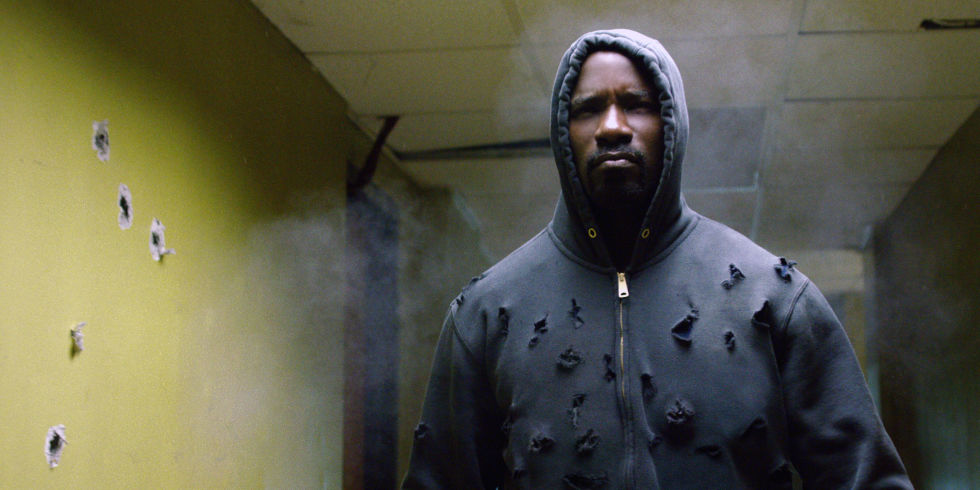…mas!!!
What’s up, my peoples! It’s your boy, The Belser, back to the land of the living from a bit of a hiatus. Truth be told, I was going through some personal hardships. Slowly but surely, things are coming around and I feel writing is the best way to alleviate that stress. Plus, me and my mans “Dynast” Dana Keels got a great subject to write about tonight…
https://www.youtube.com/watch?v=ytkjQvSk2VA
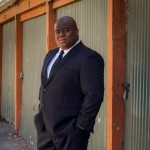
@TheBelser
JADARREL “The” BELSER: Dynast! This is the show I’ve been waiting since Netflix announced the launch of their Marvel shows in 2013. Among those were Daredevil and Jessica Jones, which both went on to become excellent series in their own right. The standout, to me, was the announcement of a character I’ve been a huge fan of since I got into comics: LUKE CAGE: HERO FOR HIRE! Most modern viewers got their first taste of Luke as a supporting character in the aforementioned Jessica Jones. However, this cat has been around for well over 40-years. For a brief history lesson, this character was created in 1972 by writer Archie Goodwin and artists John Romita and George Tuska. Set up for a crime he didn’t commit, inmate Carl Lucas volunteers for an experiment in cell regeneration. After a racist guard pushes the experiment beyond its intended purpose, Lucas gains super strength and bulletproof skin and escapes prison. He makes his way back to New York and sets up shop in Times Square as, well, Luke Cage–Hero for Hire.
Luke Cage was made to capitalize on the budding Blaxploitation film trend at the time. Movies like Shaft, Blacula, Slaughter and Superfly were super popular and Marvel wanted a hero to attract black readers. So, Cage, at his inception, was basically ‘John Shaft with super powers’. In other words, he was a bulletproof black mercenary for hire that could punch through brick walls and whoop a lot of ass.


@hatandwand
DANA “Dynast” KEELS: Haha, and tap a lot of ass, too. Funny you mention Blaxploitation, JD. The term is almost a parody of itself these days. One can’t mention the genre without conjuring up images of the 70’s or episodes of Black Dynamite. What was initially started as an easy cash-grab by the white majority owned studios–hoping to tap into the largely fertile, unmined market aimed towards blacks–would eventually become a tool for black filmmakers to tell the stories that permeated their communities and lives. These projects focuses mostly around a distrust for authority, sexier than life femme fatales and leading men, the drug trade in inner cities, all wrapped in a funky soundtrack — all serving to provide the black artists with their own distinct voice, fists raised to the sky, in a bold and original shout for Black Power.
BELSER: Then it’s crazy to think that even high profile directors like Quentin Tarantino and John Singleton could never lift adaptations of Cage off the ground. Of course thanks to Netflix, producer Cheo Hodaki Coker (Ray Donovan) got this project moving forward and it might be the most unique superhero adaptation to date.
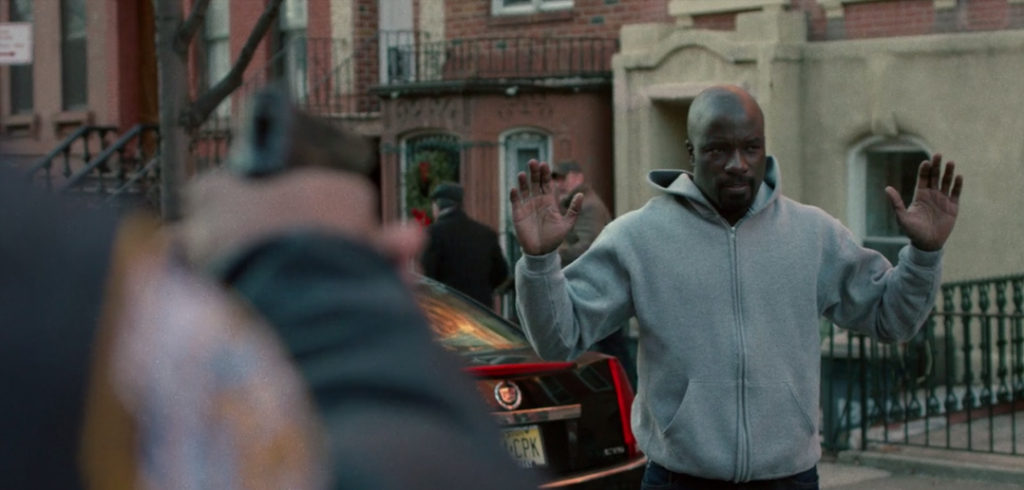
DANA: And maybe the most relevant, too. Turn on the TV and you’d be hard pressed to not find a story where a hoodie-wearing black man has been gunned down, or has died in police custody. Where the social advocate group Black Lives Matter’s simple message is often hushed or silenced with shouts of “All Lives Matter” instead. I’ll get this out of the way right now: if you’re a person who eye-rolls anytime you hear “Black Lives Matter”, then this show isn’t going to be for you. Luke Cage is unapologetically black and rightfully so. The image of a bulletproof black man set to the background of our current civil rights issues is a powerful image. For those in the community, namely Harlem of which the show is primarily set, it’s an image of hope.
BELSER: And Mike Colter (Halo: Nightfall) is that image. With Cage returning with the weight of an entire show on his back, Colter does so effortlessly. He continues to display the cool, calm and somewhat stoic exterior of Luke just like he did before. The difference, however, is that this show delves more into the character’s backstory. The fact that it is filled with betrayal, abuse, racism and death form a more complete picture of the man that Luke Cage is. He’s emotional, angry and being pushed into a role that he wants not parts of: the role of an urban superhero. He’s just a man that wants to live a normal life but– because of these powers he didn’t ask for–that’s just not meant for him anymore. It takes some time for him to realize the greatness inside himself. When he does, he stands strong with his head held high and I really dug that.
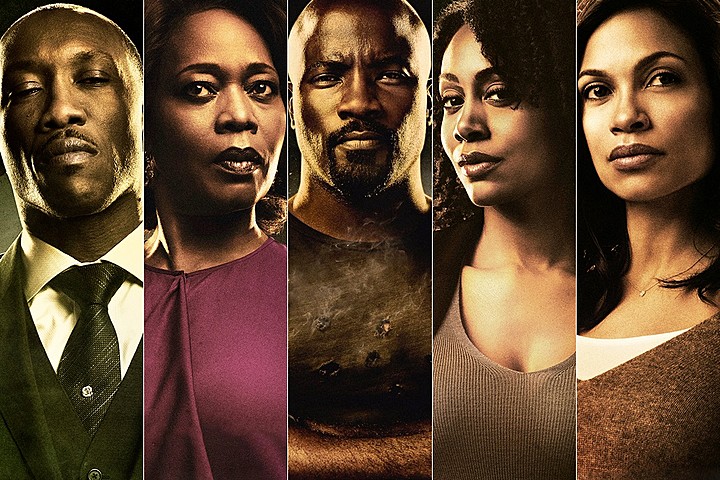
DANA: So he moved to Harlem in search of a quieter life that doesn’t involve shotgun blasts to the head and being mind controlled into blowing up your own bar. *insert smile face emoji* For decades in black communities, local barbershops have been a staple, representative of masculinity and paternal figures bonding with the upcoming generation. So naturally, it makes since that Luke has found work in the local and very well respected Barbershop belonging to Pop (Coming to America‘s Frankie Faison), Luke’s surrogate father figure who has deep ties in harlem. It was comforting to find that unlike parodies of Blaxploitation films, everything felt mostly genuine in terms of representation of what an actual black barbershop is like; characters that inhabited the shop are great examples of black masculine characters that simply want to provide for theirs and set a good example for the future generations. Meanwhile, on the other side of harlem Luke works a second job as a dishwasher at the nightclub “Harlem’s Paradise”, which took its page from the seedier side of black imagery–where the men don the persona of pimps; an emphasis on increasing capital, exploiting women, and a steady use of violence to create a false sense of masculinity that was made more popular by hip-hop artists, and cinema of the last 20-years or so.
BELSER: True, but thankfully the producers locked in some of the most powerful–without necessarily being “super” femme fatale, per se–female characters on TV in a long, long time. “Play Misty For Me”, Simone Missick (Scandal)! I thoroughly enjoyed her performance as Detective Mercedes “Misty” Knight. As the no-nonsense NYPD officer that is simultaneously attracted to and suspicious of the mysterious Luke Cage, she’s all the same funny, feisty and very much in control. There are moments where that control is taken from her and you really see her emotional core. She wants very much to believe in the legal system but the show’s circumstances are showing her it’s not that simple. Fun Fact for you Dana: Like Luke Cage, Misty Knight was also created by Marvel during the Blaxploitation craze in 1975. While Luke was inspired by characters like Shaft, Misty was equally influenced by her female counterparts at the time, like Pam Grier’s Foxy Brown and Teresa Graves’ Christie Love. In fact, Misty in the comics is a private eye like Jessica Jones, she has a bionic arm and her main love interest is actually Iron Fist, who will be getting his own Netflix series next year.
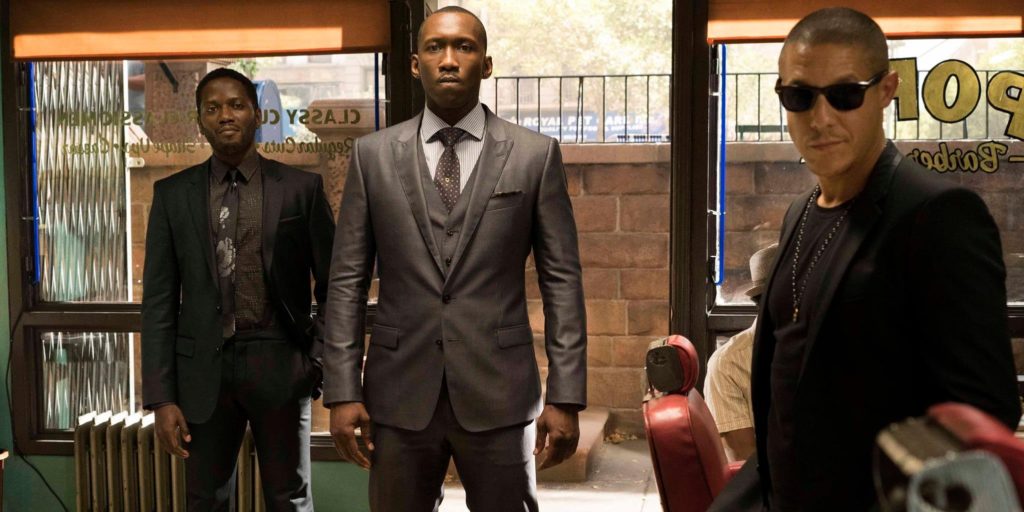
DANA: You talk about the influences for the heroes, but what about the villains, JD? Both “Black” Mariah Dillard (Desperate Housewives‘ Alfre Woodard) and her cousin, the nefarious Cornell “Cottonmouth” Stokes (House of Cards‘ Mahershala Ali) are, initially, black stereotypes, right? But thankfully, Mariah (the crooked politician) and Cornell (the calculating criminal lord) see both of their characters beautifully fleshed out. But for myself, Cottonmouth is the standout. His backstory revealing the effects of an absent father figure in a young man’s life. In fact, a reccurring theme of the show deals with father figures and the importance their presence, or lack there of, has on a child’s life.
BELSER: What I found most interesting about Cottonmouth was how his interpretation chances over the course of the series. He goes from ruthlesss to delusional, seeing himself as the king of Harlem and the best thing for it. As the story progresses, he becomes more sympathetic (especially so in flashbacks that indicate his aspirational musician wanted nothing to do with crime). As for Mariah, past abuse has given her a bit of psychotic and violent rage not unlike Vincent D’ Onofrio’s Kingpin. Another fun fact, Mr. Keels: Mariah Dillard in the comics is known as Black Mariah and shown to be morbidly obese (like 400-plus pounds). OK, so not such a fun mental note. Moving on, we get into a character that has more history with Luke than anyone on the show: Willis Stryker aka Diamondback, played by Erik LaRay Harvey (Twister). Now this guy is a great villain, completely off-the-page crazy and a stone cold killer with no gripes about taking out those that get in his way. The fact he kept quoting Bible verses–an outstanding nod to GHG, mind you–to justify his amoral actions was quite chilling. Not only did he have a checkered past with Luke but he was also a legitimate physical threat (through artificial means, of course). Just like in the comics, Stryker is the one that set up Luke to get put in jail in the first place, hence sending him down the path that leads to him getting powers. One thing I found interesting is the slight role reversal between Cottonmouth and Diamondback. In the comics, Diamondback is the delusional one that’s killed off early and Cottonmouth is the legitimate crime boss and physical threat.
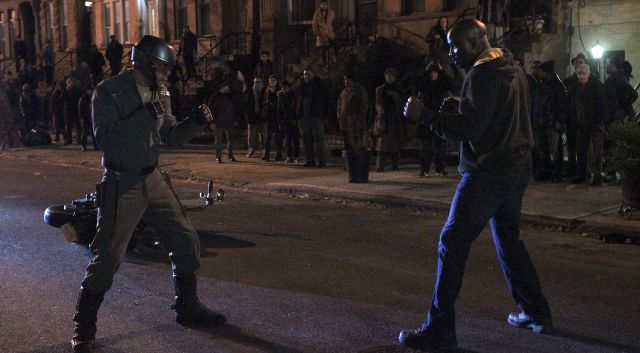
DANA: Man, you nailed it. While Luke Cage does begin to slow after Cottonmouth’s exit, I’ll agree that it quickly picks back up with the introduction Diamondback–who even brings Luke down to human size. Cage, initially reluctant to expose himself and his powers, can’t help getting caught up in the dealings of Harlem’s criminal world. In a world where those who do stand up to criminals are instantly ostracized and labeled a “snitch”, Luke is a whirlwind of fresh air through Harlem, cleaning up the city one fight at a time. While villains were great, JD, let’s not forget “The Assault on Crispus Attucks”, which was by far one of the most badass fights witnessed in a Marvel show. That one constantly had me saying “Luke Cage is a baaaaad man”.
BELSER: Haha! No Doubt. One of the things that set the show apart is that it shows the Marvel Cinematic Universe from the black perspective. You brought up racisim, (let’s not specifically forget the use of the ‘N’ word), as well as Harlem itself. The sights, the history and the overall flavor of the show gives off nostalgic feelings of Black shows from the past (i.e. New York Undercover, The Wire). And how did we not cover the music!? (Mr. #GeekSwag himself over there would have our asses!) Much of the soundtrack utilizes 70s soul music and 90’s hip-hop, and, perhaps even more impressively, featured guest appearances from many well-known urban artists such as Raphael Saadiq, Faith Evans, The Delfonics and Wu-Tang Clan’s Method Man.
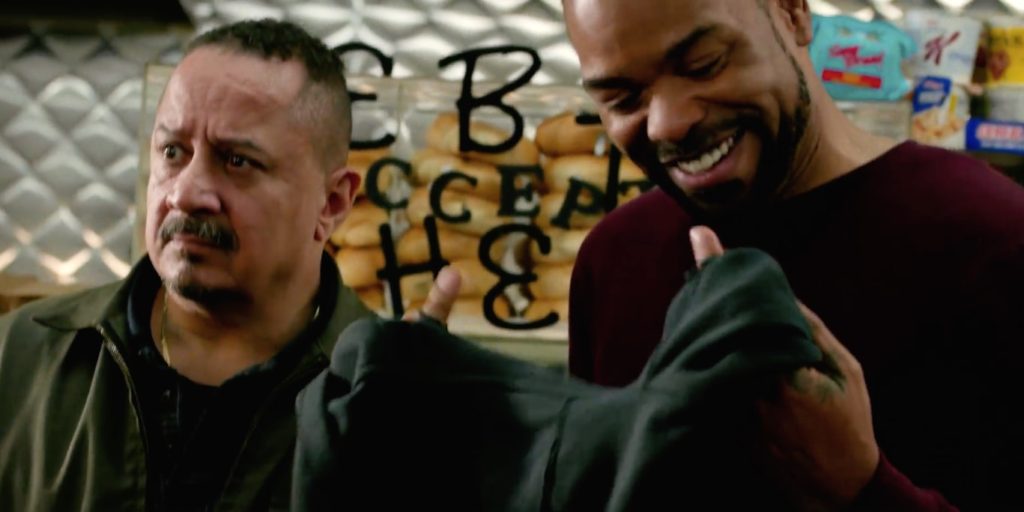
DANA: It’s all dope, man. The show itself consistently hit its marks, provided a great new entry into the Marvel MCU and also added to the pantheon of, as you mentioned, great Black works of film and television. Boldly original, and a treat for fans of the genre or of the character, Luke Cage has something there for everyone. Sometimes it can come across as an ultra-violent mix of the Shaft films, Superfly, and The Cosby Show–but take my word for it, this works. Thank Marvel for being unafraid to allow Luke Cage to be unapologetically black in every way and telling the story the way it needs to be told. Sweet Christmas, this show is good! 4.5/5 Bibles.
BELSER: I have personally never been more satisfied with a superhero project. I’ve waited many years to see this come to fruition and I have watched it twice already in a 3-day span. I give all the props to the show’s producer Cheo Hodoki Coker and the creative team at Marvel Studios for bringing one of the most significant African American characters in comics to life. 5/5 Bibles.
***THE BELSER‘S BONUS CONTENT***
BEST SCENE: Aside from the Misty Knight/Luke Cage sex scene in the first episode (wink wink), my personal favorite scene is the raid on the Crispus Attucks building in Episode 3 “Who’s Gonna Take the Weight?”. The scene has been featured in most of the trailers leading up to the release of the show. Its methodically paced, gritty and show just how powerful Luke Cage is. Seeing it in long form was quite the experience and also a tribute to the Daredevil “hallway fight”.
BEST EPISODE: My favorite episode of the series is Episode 4 “Step in the Arena” because it features the first live-action depiction of Luke Cage’s origin. It also has a subtle nod to Luke’s original costume in the comics.
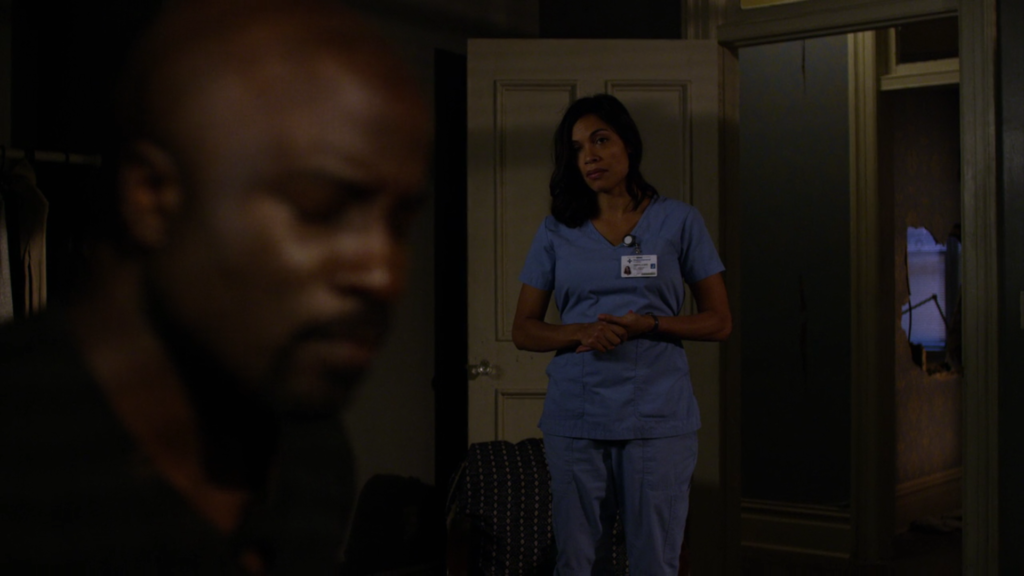
COOLEST EASTER EGGS:
• Pop gives Cage the nickname ‘Power Man’. Power Man, as you know, is one of Luke Cage’s earliest aliases.
• Claire Temple’s character is referred to as Night Nurse for the very first time in episode 11.
• Jessica Jones’ adopted sister Trish Walker makes a vocal cameo on her radio talk show “Trish Talk”
• Many characters from Daredevil make appearances on the show these include Turk Barrett, ADA Blake Tower, and lawyer Ben Donovan (who debuted in Luke Cage comics).
• Daredevil is mentioned a few times by Claire Temple. She references him as “a very good lawyer she knows in Hell’s Kitchen’.
• Jessica Jones is referenced a couple of times. Pops refers to her as Luke’s ‘rebound chick that put a shotgun to his chin’ and Mariah Dillard call her ‘that woman in Hell’s Kitchen that snapped a man’s neck because he was mind-controlled her”.
• In the last episode, Claire Temple sees an ad for self-defense classes taught by Sensei Colleen wing. Colleen Wing will be appearing in the Iron Fist series and, in the comics, eventually becomes Misty Knight’s crime-fighting partner.
• Many members of The Avengers such as Iron Man, Captain America, Thor and the Hulk are mentioned in the series. In the first episode. a young vendor is selling bootleg copies of ‘The Incident” meaning the fight between the Avengers and The Chitauri invasion.
• The guns Cottonmouth and Diamondback sells are Hammer Tech in reference to Justin Hammer, Tony Stark’s rival in Iron Man 2. Hammer is also an inmate at Seagate Prison.

